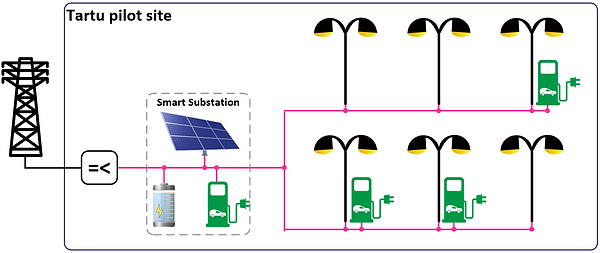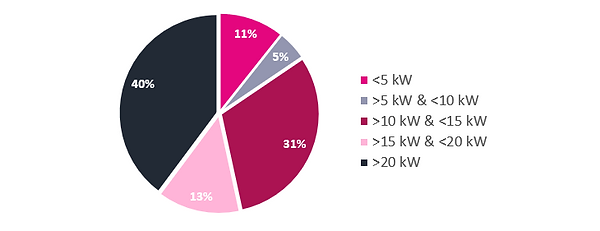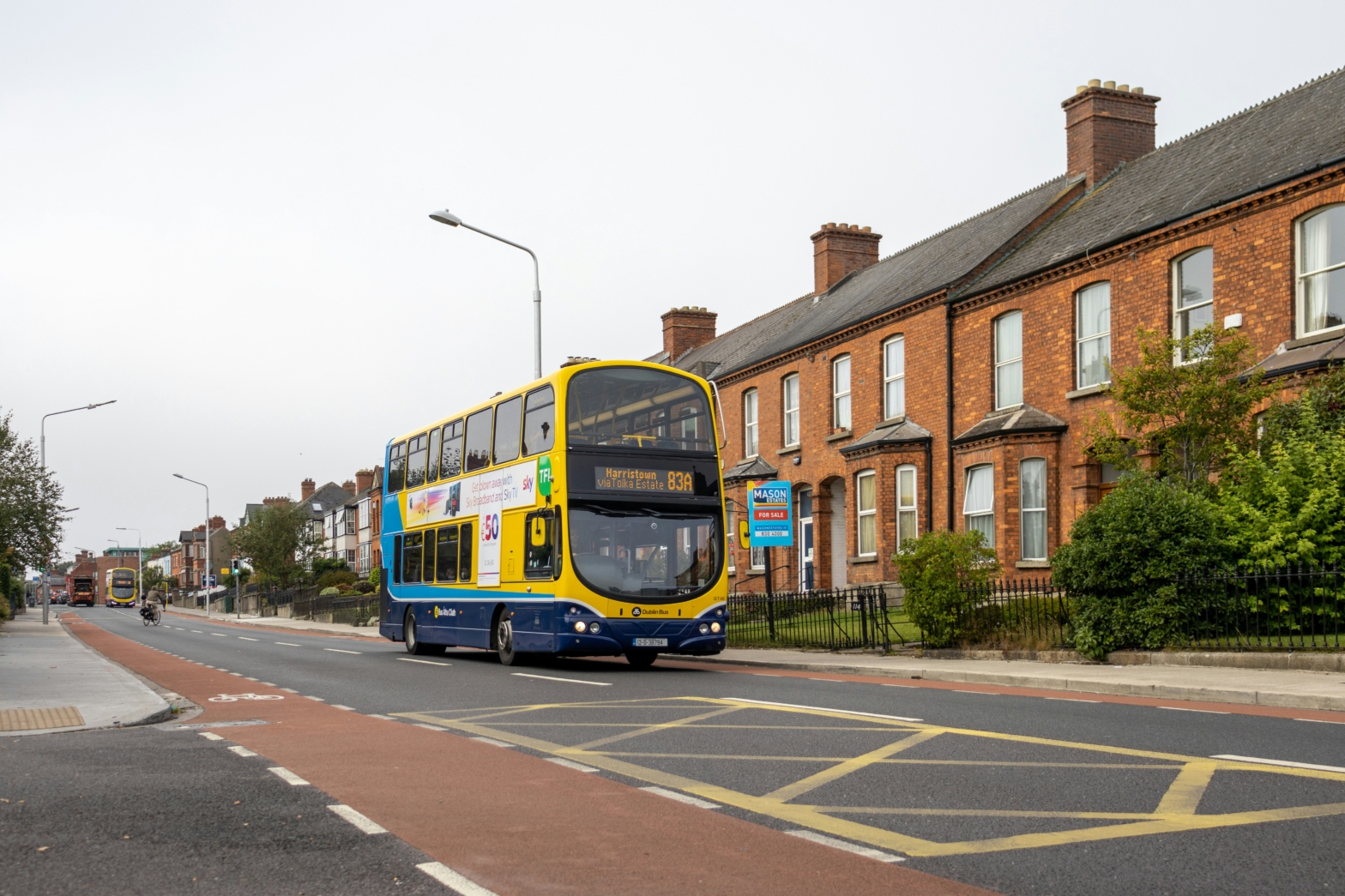Figure 2. Installed capacity of analysed street lighting control cabinets.
Aside from connection capacities, we also analysed street lighting feeders, to understand the unused capacities available for behind-the-meter electricity distribution. Our analysis revealed that the streetlighting feeder cables are over-dimensioned 20 to 100 times. We interpolated the analysed data to assess the unused technical throughput capacity in the street lighting filters of municipalities and compiled an estimate of the available technical capacity reserves in streetlighting electricity distribution grids. For the city of Tartu, we calculated that an estimated technical capacity reserve of more than 8 MW is available in the feeders of their streetlighting systems.
The reason for such over-dimensioning of cables can be both technical and economic. For example, this may be due to the alleviation of voltage drops, ensuring sufficient short circuit currents for protection devices or simply caused by better delivery conditions for specific cables. While the available technical capacity reserves are considerable, their uptake requires a thorough technical analysis. For example, while adding energy-intensive loads near the control cabinet is achievable with relatively little effort, the use of additional devices, e.g. energy storage units or voltage stabilizers, should be considered for complex cases to ensure necessary short circuit currents, load management and power quality is provided. We have carried out a study about solving voltage problems in low-voltage networks and presented it in a paper that is currently undergoing the review process.
Within the Tartu pilot site of the Microgrids pilot project, we aim to demonstrate how existing infrastructure can be used in novel ways to facilitate public services. To ensure the quality of electricity and the security of supply, a battery energy storage will be installed at the street lighting control cabinet of the pilot site. The individual parts of the pilot site will be tied together by a software platform, where the functionality of the system is managed by software applications, both developed within the scope of this project. The project will neither change the contractual connection capacities of the street lighting control cabinet, nor the size of the main fuse.
The project is funded by the European Regional Development Fund and the Estonian Ministry of Education and Research.





